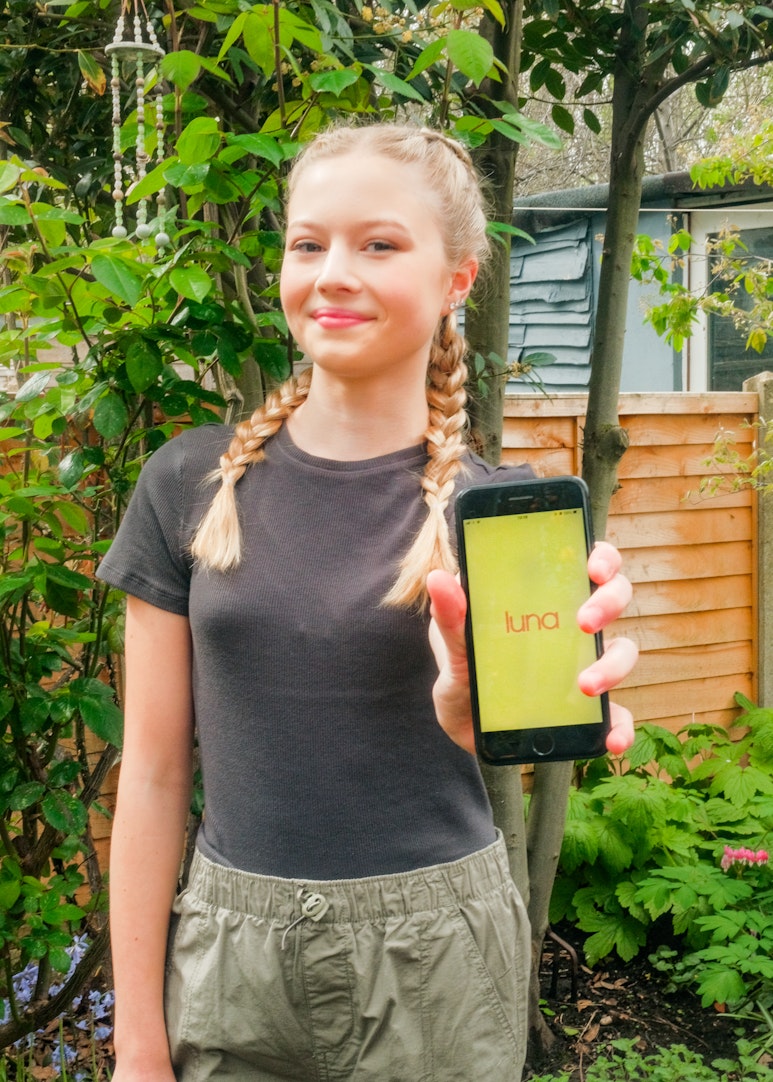
What does a first period look like?
Signs parents can look for

Quick summary
- A first period might appear as light spotting, brown discharge, or a small stain in underwear
- Early cycles are often short and irregular, which can make them hard to identify
- Tracking signs and changes in the luna app can help your teen feel more prepared and confident

If your child is approaching puberty, or you've started noticing signs like discharge or mood changes, you might be wondering what to expect next, and how to know when their first period has actually started.
The truth is, a first period doesn’t always look like a typical period.
It might be light, short, or even just a few brownish spots in their underwear.
That can make it easy to miss, especially if they’re not sure what to look for, or if you're both navigating this for the first time.
At luna, we hear from many teens who aren’t sure if a first period has “really happened.”
So in this guide, we’ll break down exactly what it might look like, why it varies so much, and how to help your teen feel prepared and confident for whenever it begins.
What does a first period look like?
- Light bleeding or spotting rather than a full flow
- Small stains in underwear that might appear dried or faded
- Blood that’s reddish-brown, rust-coloured, or pinkish
- A texture that may be dry, sticky or slightly clotted (especially if it’s older blood)
- A short duration – sometimes only 1 to 2 days
- There may or may not be any "typical" period pain
Because of how light and irregular it can be, many teens don’t realise they’ve had their first period.
If they’ve started noticing vaginal discharge, it’s also a sign their period could be on the way. Learn more about discharge before a period here.
What age do most first periods start?
The average age for a first period is between 8 and 17, though many start around 12 to 13 years old.
It usually begins around 2 years after puberty signs first appear, such as:
- Breast development
- Hair under arms or around genitals
- Clear or white discharge in underwear
If you’re looking for a deeper guide, explore the early signs of your daughter’s first period.
Why early periods can be confusing
In the first few years, periods might:
- Be irregular, sometimes skipping a month or more
- Start light, then become heavier or more painful later
- Vary in length from one cycle to the next
This is completely normal. The body takes time to adjust to a new cycle, which can make early periods feel unpredictable.
How to help your teen feel prepared for their first period
A simple way to support your teen is to help them feel ready, even if they’re not sure when their period will begin.
Try:
- Putting together a first period kit with pads, spare underwear, and pain relief (it can help to have one for home, and one for school)
- Keeping products in their school bag or locker
- Talking through what they might experience using these first period tips
- Encouraging them to track their symptoms using the luna app
You can also make the conversation easier with our guide on how to talk to your daughter about her period.
What to tell your teen
“It might just be a brownish smudge in underwear. That can still be the first sign that periods have started, even if future cycles are tracked from heavier bleeding.”
Reassuring them that there’s no “right” way to start – and that everyone is different – can go a long way in helping them feel more at ease.
How we created this article:
luna's team of experts comprises GPs, Dermatologists, Safeguarding Leads and Junior Doctors as well as Medical Students with specialised interests in paediatric care, mental health and gynaecology. All articles are created by experts, and reviewed by a member of luna's senior review team.
Sources:
NHS "Periods" | Accessed 06.08.25
https://www.nhs.uk/conditions/periods/Creekside OBGYN "Different period blood colours" | Accessed 06.08.25
https://creeksideobgyn.com/colors-period-blood-means/NHS "Starting periods" | Accessed 06.08.25
https://www.nhs.uk/conditions/periods/starting-periods/We'd love to keep in touch!
Sign up to our parent newsletter for emails on the latest teen trends, insights into our luna community and to keep up to date
By signing up, you are agreeing that we can use your email address to market to you. You can unsubscribe from marketing emails at any time by using the link in our emails. For more information, please review our privacy statement.